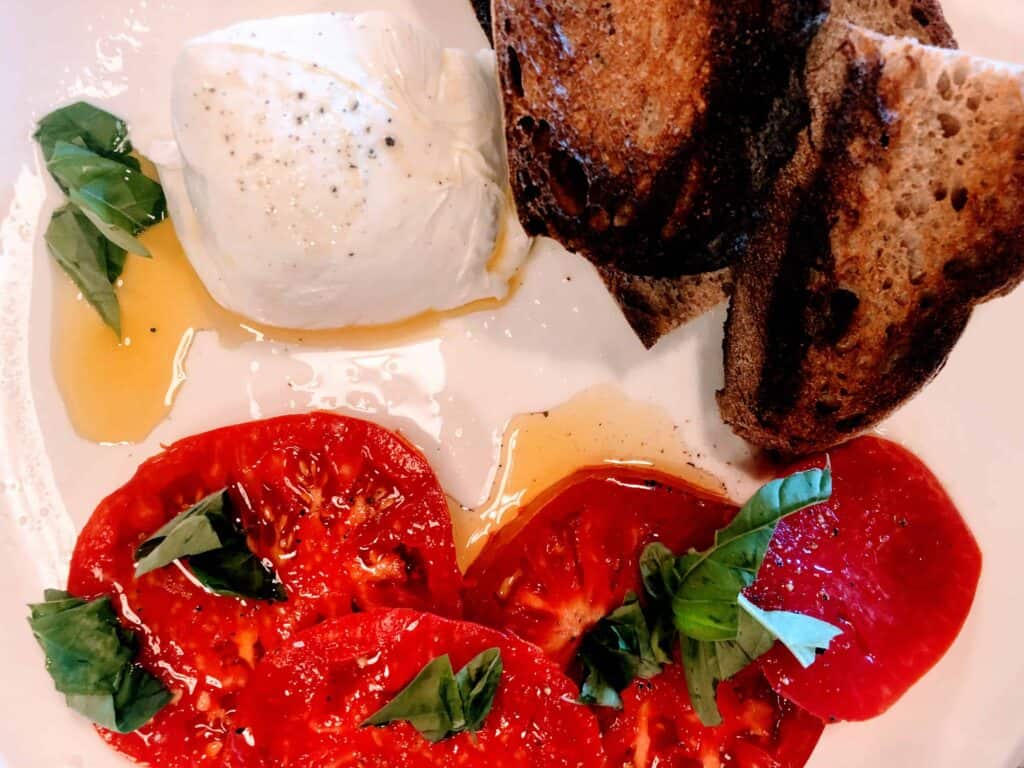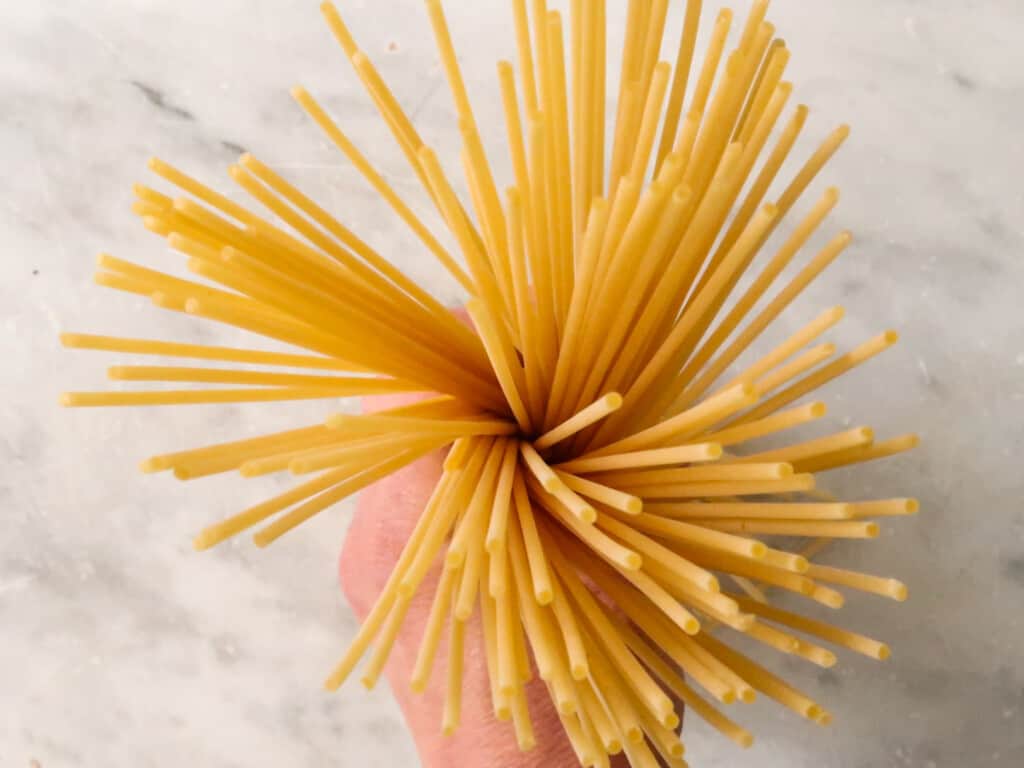Last updated on June 4th, 2024
No matter which region you are traveling in, I have a food for you to try on your February travels to Italy. There are many things that bring travelers to Italy in February including low prices, fewer crowds, mild winters, and the Carnival holiday but now I have one more reason for you: food!
I have been in Italy for over 12 years now, giving me 12 long February months to chow down and indulge in Italian winter specialties.
In this article I will share with you my top 11 foods to eat in Italy in February. So whether you are celebrating your significant other on Valentines day, on the hunt for Carnival foods or looking to warm up on a cold winter evening, read on, I have the right food for you!
Need Valentine’s Dinner Ideas?: Check out my list of Where to Eat Valentine’s Dinner in Florence.
Jump to Section
Lasagna Napoletana
(Pronounced lah-sahn-yah nah-poh-lee-tah-nah in Italian)
Lasagna Napoletana is not your traditional lasagna but Campania’s specialty made with a long list of ingredients including ricotta, ragù, tiny meatballs, and hard-boiled eggs.
It was originally made only in February in Italy in celebration of Carnival but these days, you can also find it in other months as well.
Minestrone

(Pronounced mee-neh-stroh-neh in Italian)
Minestrone is a chunky vegetable soup served year-round in Italy but it’s particularly good in February because of all the leafy green produce in Season. A hearty minestrone in February will have lots of chard, kale, spinach, fennel, potatoes, carrots, celery and onions. It might even have cannellini beans or other legumes to bulk it up.
You can find minestrone at any trattoria or osteria in Italy no matter where you are. If you are skiing in the Dolomites, it’s particularly tasty.
Minestrone will always be served with bread but you may want to consider ordering a secondo or second course (a protein) unless you are looking for a light meal.
Ribollita

(Pronounced ree-bohl-lee-tah in Italian)
Ribollita is a filling vegetable and bread stew from Tuscany made from winter vegetables like carrots, celery, onion, cabbage, kale, swiss chard and cannellini beans. What characterizes this soup is the addition of stale bread which acts as a mop to soak up all the rich broth, creating a stew instead of a soup.
Be sure to finish your ribollita with a heavy drizzle of extra virgin olive oil!
Eat It in Florence: My favorite place to eat ribollita in Florence is at Buca dell’Orafo. For more of my favorite foods to try in Florence, read 10 Foods You Must Try On Your First Visit To Florence (Italy) and The Best Cheap Eats in Tuscany – 8 Unforgettable Tuscan Street Foods.
Ravioli Dolci
(Pronounced rah-vee-oh-lee dohl-chee in Italian)
Ravioli dolci are Abruzzo’s favorite stuffed pasta made for Carnival. The filling is sweet with ricotta, egg yolks, sugar, lemon and cinnamon. But don’t be mistaken, this is not a dessert but rather a primo or first course, balanced out well with a savory tomato sauce.
Farinata con Cavolo Nero
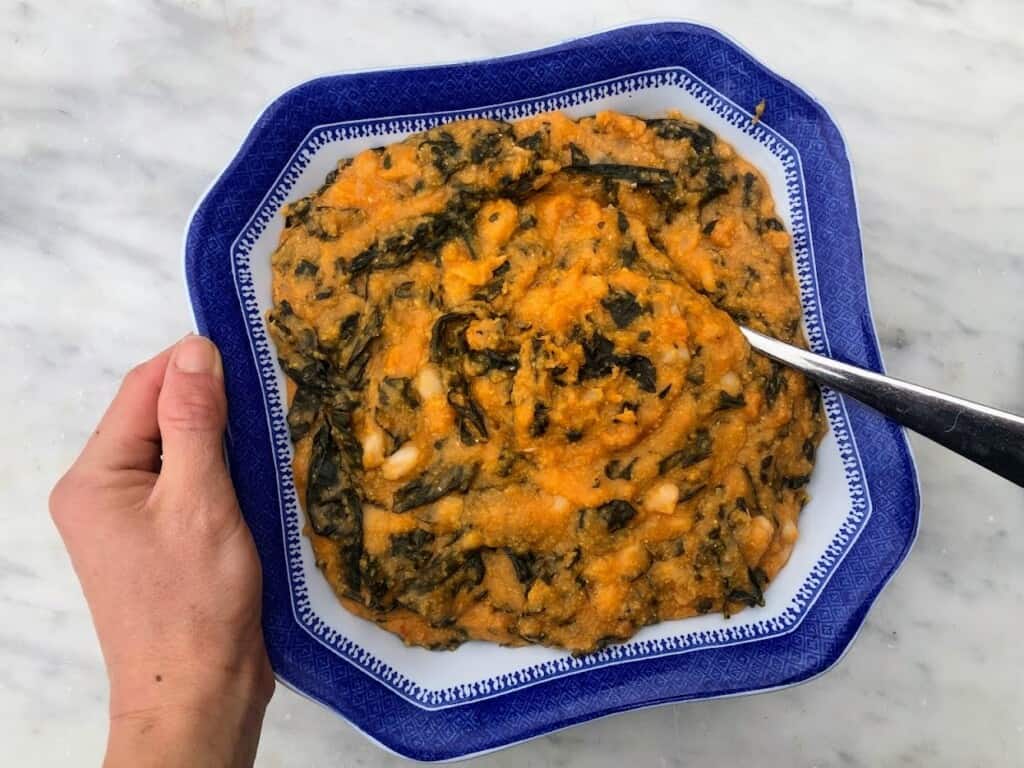
(Pronounced fah-ree-nah-tah kohn cah-voh-loh neh-roh in Italian)
Farinata con cavolo nero is a classic Tuscan dish born out of the tradition of la cucina povera, meaning poor man’s cooking. It’s a creamy soft polenta dish made with cannellini beans and local dinosaur kale.
Look for it under the primo section of menus in Tuscany in the winter (you won’t see it in the summer).
Best For: Farinata con cavolo nero is best for vegan and gluten-free travelers in Italy! It’s also one of my favorite dishes for pregnant travelers.
Insalata Siciliana
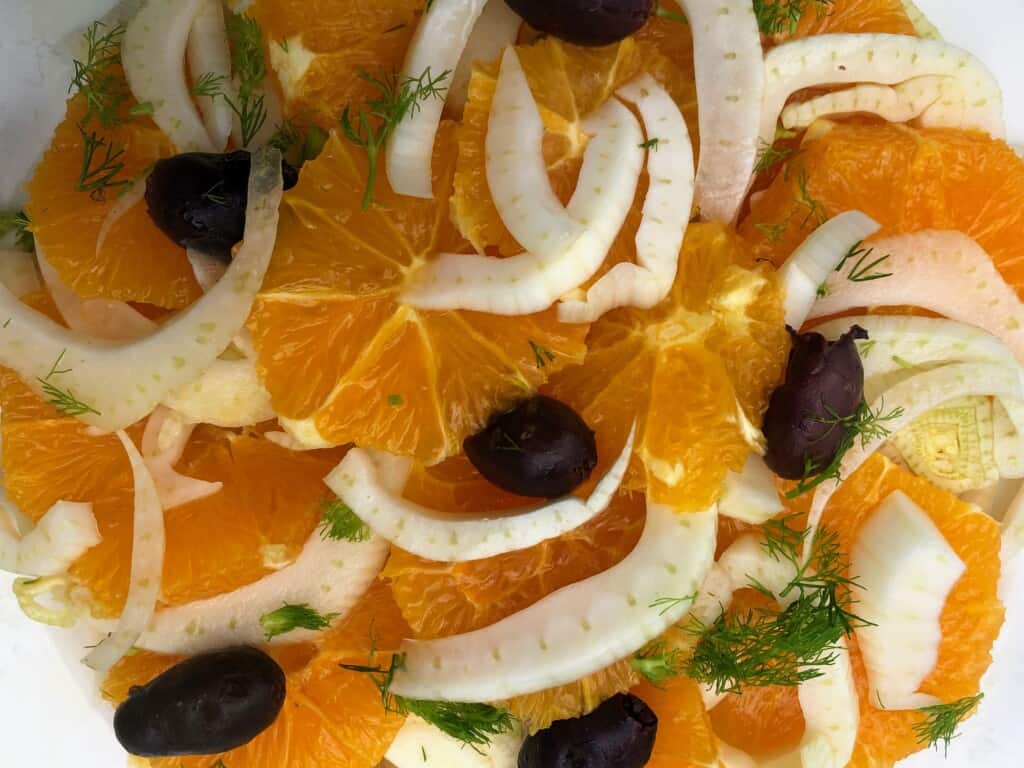
(Pronounced een-sah-lah-tah see-shee-lee-ah-nah in Italian)
Insalata Siciliana is an amazingly refreshing and satisfying salad made only in the winter when oranges and fennel are in season. Each Italian family has their own recipe but all start with thinly sliced oranges and fennel which are dressed in olive oil.
Some add raisins and pine nuts (Sicilian tradition) while others add crushed green olives. No matter how you see it, order it because once you try it, you will be ordering it (and making it when you get back home) over and over!
Make it: Follow our step-by-step instructions for Italian Fennel and Orange Salad – A Winter Salad Recipe from Sicily to recreate this easy winter salad at home.
Strucchi
(Pronounced strook-kee in Italian)
Strucchi are sweet pastries or snacks from Friuli-Venezia Giulia served during Christmas and Carnival made from shortcrust pastry stuffed with a nut-based filling enriched with raisins, jams, candied citrus zest and just a touch of grappa or rum.
Schiacciata Alla Fiorentina
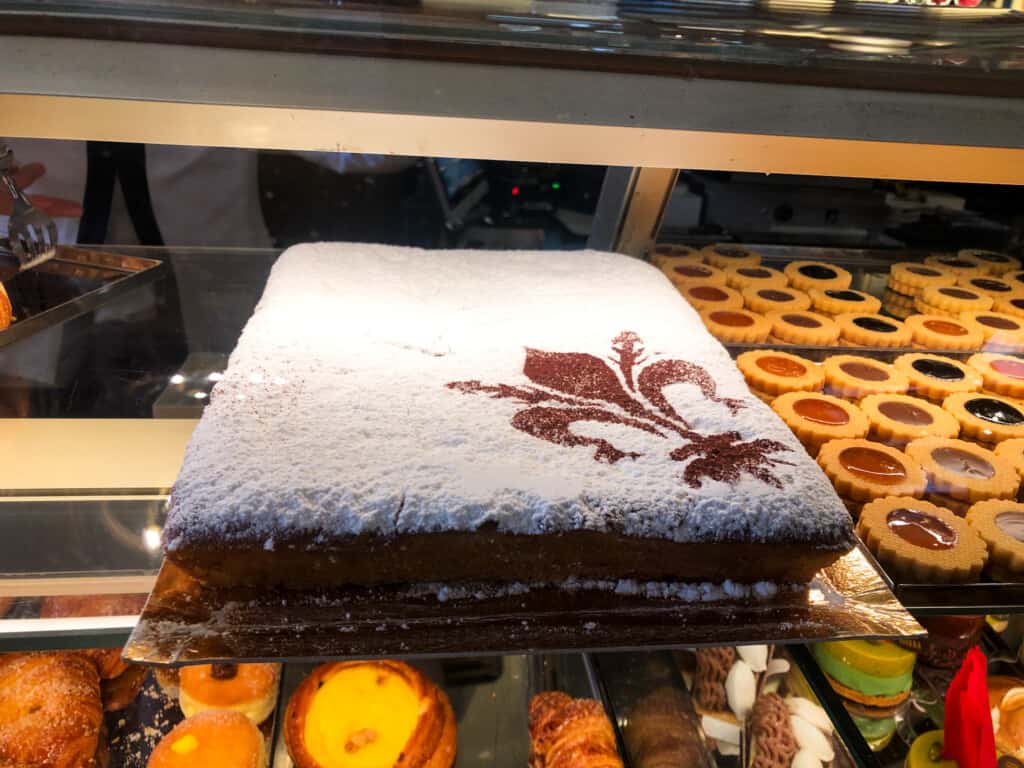
Schiacciata alla fiorentina is a dessert eaten for Carnival from Florence. You can find it outside of the city but it’s still very much a Florentine dessert.
It’s a light, airy cake topped with powdered sugar and served as a sheet cake. The best way to eat it is with chantilly or pastry cream.
Eat Like a Local: Stop by a bar, order a coffee at the standing counter space and a slice of schiacciata alla fiorentina at Nencioni.
Frìtole
(Pronounced free-toh-leh in Italian)
Frìtole, sometimes called frittole or frittelle, are fried Italian donuts that come in all shapes and sizes depending on where you are in Italy. They are typical of the Carnival celebration which is why you start to see them crop up in bakeries starting in late January and into the beginning of March.
You can eat them plain or order them filled with things such as ricotta, custard or chocolate.
Where To Eat Them: Tonolo in Venice during Carnival. Read in-depth review of other favorite places to eat frìtole in Venice in 10 Amazing Bakeries In Venice, Italy – Where to Get Your Pastry On and Where To Eat Breakfast In Venice, Italy – A Local’s Favorite Breakfast Nooks.
Cenci
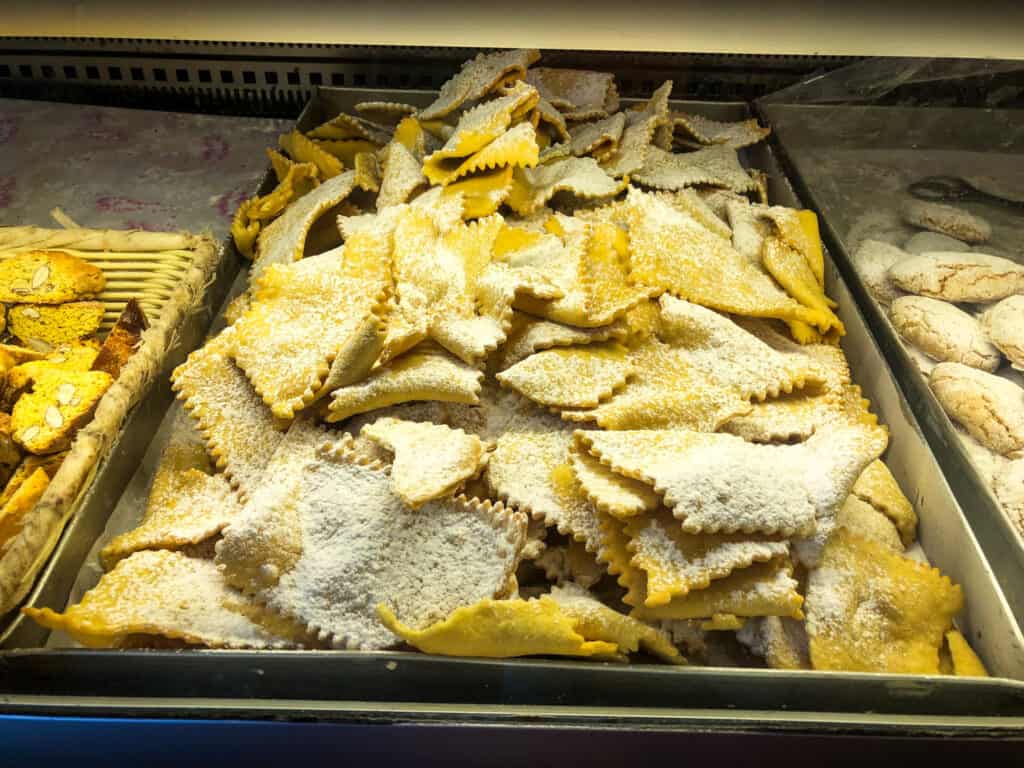
(Pronounced chehn-chee in Italian)
Cenci is another sweet treat you will find throughout Italy for the Carnival holiday but the name will change depending on where you are. Thin strips of dough are deep fried and dusted with powdered sugar.
In Tuscany, they are called “cenci”, “Bugie” in Liguria, “Frappe” in Rome, “Galani” in Veneto, and “cròstoli” in Friuli.
We Recommend: For the most authentic cenci, head to a bakery. We recommend S.forno – Via Santa Monaca, 3r, in Florence. They also have a small artisan grocery section, great for all you foodies.
Cicerchiata
(Pronounced kee-chehr-kee-ah-tuh in Italian)
Cicerchiata is just another name for struffoli, popular honey coated fried dough balls made in celebration of Carnival. Cicerchiata are regional to Abruzzo while struffoli are what you will find in Naples.
The balls are then shaped into a ring form. Once the honey hardens, the balls stick together. Look for them in bakeries and bars in late January, into February and through early March.
Curious to know more about Italy’s seasonal foods, dishes, and produce? Check out
Foods to Eat in Italy in January – February – March – April – May – June – July – August – September – October – November – December.
Italian Fruits and Vegetables in Season in January – February – March – April – May – June – July – August – September – October – November – December.



